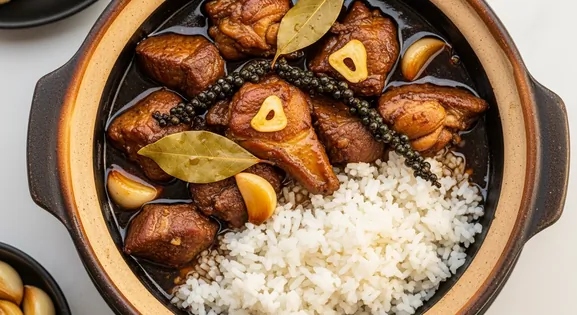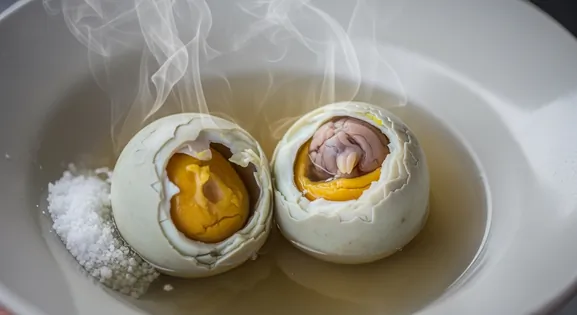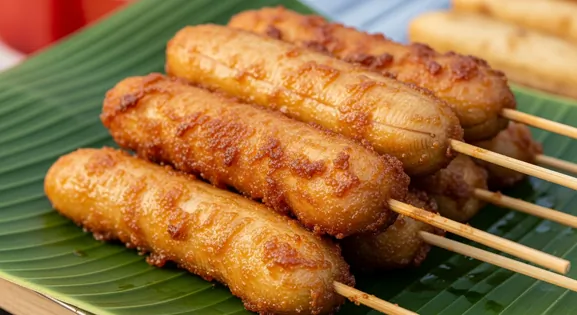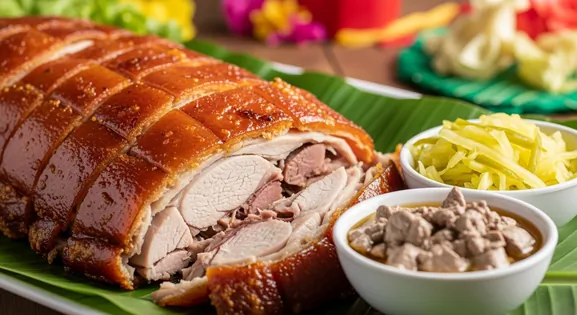Lumpia (Filipino Spring Rolls) in Manila
Lumpia
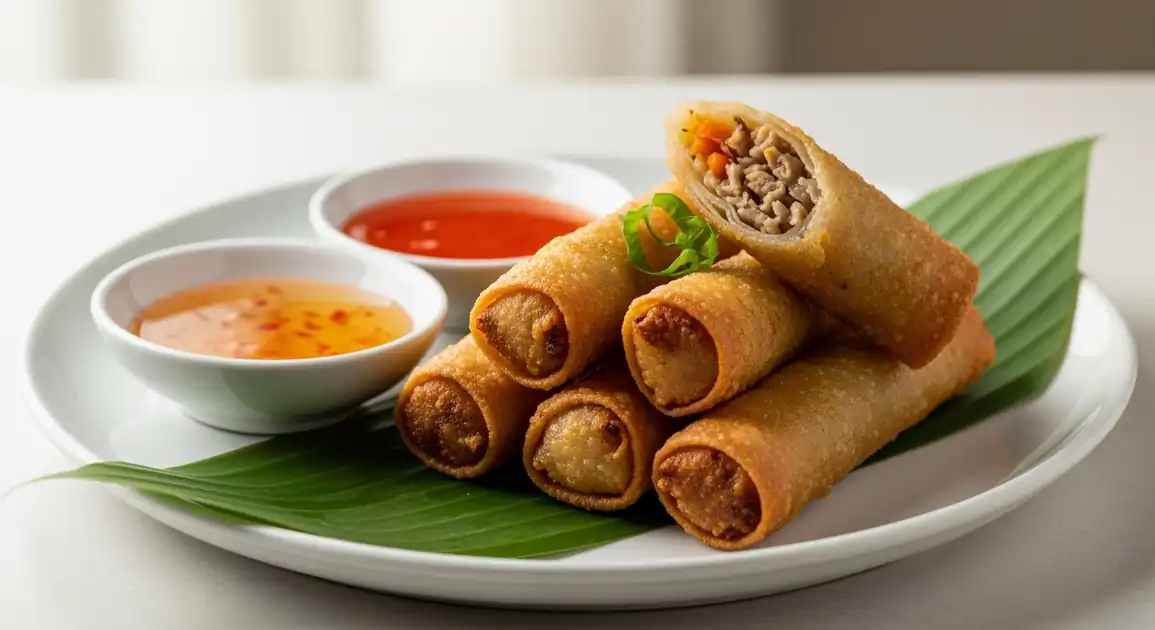
A Guide to the Local Experience
Step into Manila's vibrant food scene and you'll quickly encounter lumpia, a crispy, savory delight found everywhere from bustling street corners to family gatherings. As a local, I'll guide you to the best spots and share how to savor this Filipino favorite like a true Manileño.
New to Lumpia (Filipino Spring Rolls)? Learn all about its history in our complete guide.
What the Locals Know
For an authentic, budget-friendly experience, seek out local "carinderias" (small eateries). They often serve homemade lumpia as part of a meal, offering a taste of home-cooked Filipino flavors.
While fried lumpia is popular, try "Lumpiang Sariwa" (fresh spring rolls) in places like Binondo. It's a healthier, flavorful option with fresh vegetables and a sweet peanut sauce.
Many Manileños enjoy lumpia, especially Lumpiang Shanghai, alongside "pancit" (noodles). Look for eateries that offer this classic combination for a truly satisfying meal.
Where to Find Lumpia (Filipino Spring Rolls) in Manila
Binondo (Chinatown)
Manila's Chinatown offers numerous eateries and stalls selling lumpia, including Chinese-influenced versions and classic Filipino styles.
Binondo Church, Ongpin Street, Eng Bee Tin Hopia
Lunchtime, Afternoon
Quiapo
Known for its bustling market and street vendors selling a variety of affordable street food, including lumpia.
Quiapo Church, Plaza Miranda, Underpasses
Daytime, Evening
University Belt (U-Belt)
Areas surrounding universities like UST, FEU, UE are packed with budget-friendly eateries and stalls catering to students.
UST Hospital, Recto Avenue, Morayta Street
Lunchtime, Afternoon
Makati / BGC Food Courts & Markets
Higher-end food courts in business districts and weekend markets often feature lumpia stalls.
Salcedo Market (Saturdays), Legazpi Market (Sundays), Mall food courts (Glorietta, Greenbelt, SM Aura)
Lunchtime, Weekends (markets)
Vendor Tips
- In Binondo, look for places specializing in fresh lumpia (sariwa) for a different experience.
- Don't hesitate to ask for extra vinegar or sweet chili sauce.
- Specify 'bagong luto' (newly cooked) if possible.
- Observe if the vendor keeps the cooked lumpia under a heat lamp, which helps maintain warmth but can affect crispiness over time.
A Traveler's Checklist
What to Look For
-
Street vendors in busy areas like Quiapo or Binondo frying lumpia constantly ('luto upon order').
High traffic ensures fresh batches and hot oil, key for safety and crispiness in Manila's street food scene.
-
Relatively light-colored, actively bubbling frying oil.
Indicates the oil isn't old or burnt. Crucial given the volume of street frying in Manila.
-
Vendors using clean tongs for handling cooked lumpia, separate from raw.
Prevents cross-contamination, a must for street food safety.
-
Established stalls or 'carinderias' known for their lumpia.
Reputation often correlates with better practices, especially in competitive Manila.
What to avoid
-
Large stacks of pre-fried lumpia sitting uncovered, especially near traffic.
Exposed to dust, fumes, and potential contamination. Loses crispiness and may not maintain optimal quality if lukewarm.
-
Vendors using very dark, almost black, or smoking oil.
Indicates old, degraded oil which is unhealthy and affects taste.
-
Stalls with visible pests (flies, cockroaches) around the food area.
Major hygiene red flag.
-
Lumpia that looks excessively greasy or pale.
Suggests improper frying temperature (too low), which might not cook the filling thoroughly or maintain optimal quality.
Practical Details for Enjoying Lumpia (Filipino Spring Rolls)
Dietary Information
Important Note for Travelers: Your safety is our priority. Below are the common allergens associated with the traditional preparation of this dish. However, recipes and ingredients can vary significantly between establishments. Always confirm all ingredients directly with the food vendor before ordering, especially if you have a severe allergy.
Potential Allergens
Dietary Suitability
Price Guide
Budget Tips
- Street vendors in areas like Quiapo or near universities offer the lowest prices (10-25 PHP).
- Food court prices are slightly higher (25-40 PHP/piece).
- Restaurant appetizers will be the most expensive (150-350 PHP per serving of several pieces).
- Look for 'value meals' in carinderias that might include lumpia.
Serving & Seasonality
Street food served in paper or plastic bags. Carinderias/restaurants serve on plates. Sweet chili sauce and spiced vinegar are standard offerings for fried lumpia.Best Times to Enjoy
- Merienda (Afternoon Snack): Very popular time (3 PM - 5 PM) for grabbing lumpia from street stalls or cafes.
- Lunch Rush: Commonly bought as part of lunch, especially from carinderias (11 AM - 1 PM).
- Evening Street Food: Available alongside other street foods in night markets or busy areas (6 PM - 10 PM).
Seasonal Availability
Year-round availability.
How to Order with Confidence
When ordering lumpia in Manila, especially from street vendors, you'll typically specify the quantity (e.g., "dalawang piraso" for two pieces). Don't hesitate to ask for extra "sawsawan" (dipping sauce), as preferences for sweet chili or spiced vinegar vary. For fried lumpia, always request "bagong luto" (newly cooked) to ensure maximum crispiness and freshness.
How Locals Eat It: Variations
Lumpiang Keso (Cheese Lumpia)
Simple lumpia filled primarily with cheese sticks, often cheddar, then fried. Popular snack.
Turon
While technically different (sweet), it uses the same wrapper. Filled with banana and jackfruit, coated in caramelized sugar. Often sold alongside savory lumpia.
Gourmet Lumpia
Found in some Manila restaurants, featuring non-traditional fillings like sisig, adobo flakes, or seafood.
Local Significance
Local Significance
In Manila, lumpia represents a quick, affordable, and satisfying meal or snack for people from all walks of life. It's a reliable go-to food found virtually everywhere.
Eating Customs
- Eating on the go is common for street food lumpia.
- Combining both sweet chili and vinegar is sometimes done.
- Lumpiang Shanghai is often cut into smaller pieces when served at parties.
Getting the Most Out of Your Meal
Finding Great Lumpiang Shanghai in Binondo
Navigate Manila's bustling Chinatown, Binondo, to discover authentic and delicious fried lumpia, from classic Lumpiang Shanghai to unique Chinese-influenced varieties.
- Explore the main streets like Ongpin and side alleys known for food stalls.
- Look for small eateries or stalls specializing in fried snacks, often with visible frying stations.
- Prioritize vendors frying fresh batches, identifiable by the activity and aroma.
- Observe the vendor's hygiene practices – clean hands/tongs, tidy area.
- Don't hesitate to try 'kikiam' or other fried snacks alongside lumpia from the same reputable vendor.
Choosing Quality Street-Side Lumpia
Practical tips for making smart choices when enjoying street-side lumpia in Manila, focusing on quality and freshness indicators.
- Always choose vendors cooking lumpia fresh to order ('bagong luto').
- Visually inspect the oil quality – avoid dark or smoky oil.
- Ensure the vendor uses separate utensils for raw and cooked food.
- Check the dipping sauce ('sawsawan') – ensure it's covered and looks fresh (vinegar-based sauces are generally a good choice).
- Eat the lumpia while it's still hot for the best taste and optimal quality.
Our Commitment to Quality
At Tasteplorers, our mission is to provide the most accurate and useful travel information in the world. To achieve this, all content on this site is created through our unique editorial framework. We utilize leading AI research tools, guided by our proprietary prompts, and a multi-stage validation process. This entire system is overseen by our editorial team to ensure everything we publish meets our high standards for accuracy, cultural nuance, and practical value for travelers.
Learn more about our Editorial Process and our Mission.
Countries
Explore regions
Europe
Discover Europe's diverse culinary landscape, from Mediterranean flavors to hearty Alpine fare. Learn to navigate markets, decode menus, and eat like a local.
Latin America & Caribbean
Discover the vibrant cuisines of Latin America & the Caribbean. Our expert guide covers everything from Mexican street food to Peruvian ceviche and market tips.
Oceania
Explore Oceania's diverse food scene. Learn about Polynesian earth ovens, Fijian feasts, and the vibrant café culture of Australia and New Zealand.
Southeast Asia
Explore Southeast Asia's diverse food cultures from Thailand to Vietnam. Get expert tips on navigating spice levels, choosing quality vendors, and understanding the rich traditions of the region.
